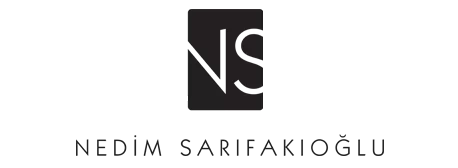Biohacking and Plastic Surgery: A Comprehensive Evaluation

Overview of Biohacking
What is Biohacking? Definition and Core Philosophy
Biohacking is an approach that encompasses a wide range of applications to fine-tune human biological processes for improved well-being. This ranges from simple lifestyle and dietary changes to advanced technological interventions. At its core, it’s the practice of optimizing and enhancing various aspects of human performance and well-being using science, technology, and lifestyle interventions. It aims to empower individuals to take control of their health and unlock their full potential.
Biohacking involves making changes or manipulations to the brain and body to optimize health without using traditional medicine. It reflects a mindset of “hacking” and improving the biological aspects that are lacking, rather than simply accepting them. It emphasizes being proactive and taking small steps toward a healthier, more balanced life. The term biohacking is quite broad; it can include goals that vary from person to person, ranging from weight loss to enhancing brain function. It extends from simple “hacks” (like sleep tracking and exercise trends) to experimental procedures performed outside of a lab or hospital.
A significant dynamic underlying this movement is the quest for the democratization of access to scientific tools and knowledge. Biohackers openly express frustration with the slow progress in biotechnology due to “overregulation.” This reveals a critique of the existing scientific and medical systems. One of the main motivations for individuals to turn to biohacking is the desire to gain a “sense of control” over their own physiology. This highlights a quest for individual autonomy and personal empowerment. When these factors are combined, it becomes clear that biohacking is not just about personal health optimization but also represents a broader socio-technological movement born out of a desire to democratize access to scientific knowledge and tools, a pursuit of individual autonomy, and a reaction against the limitations of traditional healthcare systems.
This movement is also referred to as “DIY (Do-It-Yourself) Biology,” which refers to the act of conducting projects without the aid of professional experts. This approach is both a challenge to the elitist structure of science and a quest for individual empowerment over one’s own health. However, this “democratization” effort also carries potential risks due to a lack of safety and ethical oversight, as the widespread dissemination of knowledge and tools does not always equate to safe use.
Types of Biohacking and Popular Applications
Biohacking is divided into different categories based on individual goals and methods of application. These categories range from nutritional and lifestyle changes to advanced technological interventions and even body modifications.
Nutrition and Lifestyle-Focused Biohacking
 Nutrition and lifestyle are one of the most accessible and common starting points for biohacking. Applications in this area generally focus on optimizing daily habits.
Nutrition and lifestyle are one of the most accessible and common starting points for biohacking. Applications in this area generally focus on optimizing daily habits.
Nutrigenomics and Personalized Nutrition: Nutrigenomics is a field that studies how diet affects genetic expression. This approach involves creating a personalized nutrition plan based on an individual’s DNA. It’s based on understanding the direct effects of the foods we eat on metabolism, inflammation levels, and the risk of developing certain diseases. Genetic and metabolic testing can be used to better understand how an individual reacts to specific foods. This personalized approach can increase motivation and long-term commitment to healthy eating in areas like weight management and diabetes prevention. Examples include experimenting with popular eating plans like the ketogenic or Mediterranean diet or implementing elimination diets to detect food sensitivities. However, nutrigenomics can be controversial due to the belief that outcomes cannot be entirely attributed to this practice; diet is just one of many factors that influence gene expression. Other factors like exercise, weight, and stress management also play a significant role in gene expression and disease prevention.
Intermittent Fasting and Cellular Renewal (Autophagy): Autophagy is a fundamental biological process essential for maintaining cellular health; it refers to the breaking down and recycling of cellular components and can be thought of as “cellular housekeeping” or the “cellular garbage disposal mechanism.”1 Research suggests that autophagy can provide protection against cancer, heart disease, infections, and neurodegenerative disorders. With age, autophagy declines, contributing to the aging process and age-related diseases. Exercise, dietary choices, calorie restriction, intermittent fasting, and fasting-mimicking diets can all stimulate autophagy. These practices can help improve metabolism, aid in weight loss, and assist with blood sugar control. Mobile fasting apps can help maintain consistency with this popular biohacking practice. Tailoring fasting schedules to individual health needs and lifestyles is critical for successful outcomes.
Sleep Optimization and Stress Management: Seven to nine hours of quality sleep provides significant benefits for heart health, weight control, mental sharpness, the immune system, and mood. Biohackers aim to improve sleep quality with technologies and supplements. Sleep-tracking devices and apps like the Oura Ring and WHOOP provide detailed information on sleep cycles, heart rate variability (HRV), and body temperature, helping to optimize recovery processes. Stress management techniques include meditation, mindfulness, and breathing exercises. Wearable devices like the Apollo Neuro aim to improve stress resilience and sleep quality through vibrations, while apps like Calm and Daylio support mental health.
Physical and Cognitive Performance Enhancement
Biohacking offers various strategies to maximize physical and mental performance.
Exercise and Physical Activity Optimization: Physical biohacking aims to improve the body’s physical performance with practices like exercise routines, intermittent fasting, cold exposure, sauna, and red light therapy. This aims to keep the musculoskeletal system in optimal condition and is a critical factor for longevity. Regular physical activity promotes cardiovascular health, increases longevity, reduces inflammation, and improves mental health. Trying different types of exercise, adjusting intensity, or using biofeedback methods are popular approaches in this area. Short exercise breaks (“exercise snacks”) can counteract the harmful effects of a sedentary lifestyle. New technologies like EMS body suits aim to boost physical performance by providing intense workouts in a short amount of time.
Nootropics and Brain Functions: Cognitive biohacking aims to improve cognitive function and mental clarity using meditation, mindfulness, reading, or substances like adaptogens and nootropics. Examples of nootropics include NAD+, caffeine, ashwagandha, DMAE, piracetam, pyritinol, and vinpocetine. These substances are believed to help improve focus, memory, and overall brain health.
Cold/Hot Therapy and Light Therapies: Cold therapy includes practices like ice baths, cold water swimming, or whole-body cryotherapy sessions. These methods are said to reduce inflammation, accelerate muscle recovery, strengthen the immune system, and regulate brain chemistry. Hot therapy involves saunas, which increase blood flow and heart rate, boost metabolism, and aid in relaxation. Red light saunas are also popular. As for light therapy, exposure to bright light in the early morning (sunlight or a special box) can improve mood, while red or near-infrared light exposure promotes cellular repair, reduces inflammation, and improves skin health. It can also improve cognitive function. The concept of hormesis is the process where exposure to low-level stressors, such as cold and heat exposure, triggers beneficial adaptive responses in the organism. This can enhance cellular function, resilience, and longevity.
Technological Integrations and Body Modifications
Technology is a fundamental component of biohacking, enhancing the ability to monitor, optimize, and even alter individual biology.
Wearable Technologies and Biometric Tracking: Smartwatches and fitness trackers (Garmin, WHOOP, Oura Ring) are popular biohacking tools for monitoring heart rate, physical activity, sleep, and other health goals. Advanced devices include DEXA scans (the gold standard for body composition) , Oura Ring (sleep quality, HRV, body temperature, and recovery tracking), Lumen (real-time metabolic tracking) , WHOOP Strap (HRV, recovery, training load, and performance), and Continuous Glucose Monitors (CGMs) (real-time blood sugar level tracking). Other technological tools include the Withings Body Comp (smart scale) , Apollo Neuro (stress reduction with vibrations), imaware (at-home health test kits), FightCamp (boxing technology) , Hydrow (rowing machine) , and JAXJOX (smart fitness equipment).
DIY Biology and Genetic Engineering: DIY Biology is a movement that encourages individuals to experiment with biotechnology tools and transform biological processes outside of traditional labs. Examples include extracting one’s own DNA, preparing bacterial cultures, fermenting food, and creating genetically modified organisms (GMOs). Genetic engineering involves modifying microorganisms or plants. Tools like CRISPR can be used to engineer the genomes of bacteria or yeast. In medical applications, initiatives like the Open Insulin project aim to make recombinant insulin more accessible. Open-source artificial pancreases (OpenAPS, Loop, AndroidAPS) have been developed for people with diabetes.
The Grinder Movement and Implants: Grinders are a community of biohackers who perform body modifications and are associated with the biopunk movement, open-source transhumanism, and techno-progressivism. This is a more radical type of biohacking that involves body modifications performed by experts, such as implanting computer chips or getting injections/implants. Examples include DIY magnetic fingertip implants, RFID chips, Kevin Warwick’s “Project Cyborg”, and Rich Lee’s headphones implanted in his tragus or his vibrating pelvic implant called Lovetron9000.
Biohacking initially aimed to optimize biological processes but has shifted to focus on monitoring health data in real time with the development of technology. This indicates a transition from passive observation to active data collection. Fields like nutrigenomics emphasize an individual’s unique biological makeup by offering personalized nutrition plans through genetic testing. The most current trends (2024-2025) point to areas like personalized nutrition, peptide therapy, AI-powered smart wearables, metabolic function optimization, and brain optimization. These trends show a move toward even more individualized and sophisticated approaches. These developments indicate that biohacking is not just about general well-being but is increasingly shifting toward personalized medicine and data-driven optimization as technology advances. The tendency to understand and tailor interventions to an individual’s unique biological makeup (bio-individuality) is growing. This represents a shift away from traditional “one-size-fits-all” health approaches toward individualized and evidence-based (based on personal data) solutions. This evolution shows that biohacking is transforming from simply “hacking” to a discipline that uses scientific methods and technology to understand the complexity of individual biology and continuously make adjustments. This also explains why there is a wide spectrum, from the more radical “grinder” movement to the more accessible and widespread “lifestyle” biohacking. The role of technology in this field is deepening, moving from passive tracking to active intervention and customization based on personal data.
The following tables summarize popular biohacking applications and the main technological devices used in this field:
Table 1: Popular Biohacking Applications and Their Intended Benefits
| Application Area | Example Application | Intended Benefits | Related Sources |
| Nutrition | Nutrigenomics | Personalized nutrition, metabolism optimization, reduced disease risk, weight management | 1 |
| Nutrition | Intermittent Fasting | Cellular renewal (autophagy), weight loss, blood sugar control, improved metabolism | 1 |
| Sleep | Sleep Optimization | Quality sleep, heart health, mental sharpness, immune system boosting, improved mood | 2 |
| Stress Management | Meditation/Breathing Exercises | Stress reduction, mental clarity, focus, improved mood | 2 |
| Physical Performance | Exercise Routines | Musculoskeletal health, cardiovascular health, reduced inflammation, mental health | 4 |
| Physical Performance | Cold/Hot Therapy | Reduced inflammation, muscle recovery, boosted metabolism, relaxation | 2 |
| Cognitive Performance | Nootropics | Focus, memory, overall brain health, mental clarity | 2 |
| Technological Integration | Wearable Devices | Heart rate, activity, sleep tracking, metabolic data, recovery tracking | 2 |
| Body Modification | Implants (RFID, Magnetic) | Opening doors, making payments, unlocking phones, enhanced sensory perception | 16 |
| Genetic Engineering | DIY Gene Editing | Modifying microorganisms or plants, open-source insulin/artificial pancreas | 5 |
| Light Therapy | Red/Near-Infrared Light | Cellular repair, reduced inflammation, skin health, cognitive function | 2 |
Table 2: Main Technological Devices Used in Biohacking
| Device Name | Use Case/Measured Metric | Target Optimization | Related Sources |
| Oura Ring | Sleep quality, HRV, body temperature | Sleep optimization, stress management, recovery tracking | 10 |
| Lumen | Metabolic flexibility (fat/carb burning) | Metabolism optimization, energy levels, personalized diet | 10 |
| Continuous Glucose Monitors (CGM) | Real-time blood sugar levels | Diet optimization, insulin sensitivity, fasting strategies | 2 |
| WHOOP Strap | HRV, recovery, training load, performance | Training optimization, overtraining prevention, stress tracking | 10 |
| DEXA Scan | Body composition (fat, muscle, bone density) | Fat loss, muscle gain, general health and longevity tracking | 10 |
| Apollo Neuro | Stimulating the nervous system with vibrations | Stress resilience, sleep quality, cognitive function | 12 |
| Withings Body Comp | Weight, body composition, cardiovascular data | General health tracking, weight management, body composition analysis | 12 |
| imaware | At-home health test kits (biomarkers) | Proactive health management, detection of nutritional deficiencies | 12 |
| FightCamp / Hydrow / JAXJOX | Interactive fitness equipment | Physical performance, training variety, data-driven exercise | 12 |
| Garmin Running Dynamics Pod | Running dynamics (cadence, stride length, vertical oscillation) | Running performance optimization | 12 |
Prominent Biohackers and Communities
The biohacking movement is shaped by various individual pioneers and organized communities. These figures and groups represent different aspects of the movement.
Individual Pioneers and Their Contributions
Kevin Warwick: An English cybernetics professor and scientist, Kevin Warwick has advanced and popularized cyborg technology and biohacking through his self-experiments. He is particularly known for work like “Project Cyborg.”
Amal Graafstra: Gained attention in 2005 for implanting an RFID chip. He developed human-friendly chips and founded the biotechnology company Dangerous Things in 2013. He is known as the author of the book RFID Toys and a TEDx speaker on biohacking topics.
Josiah Zayner (Jo Zayner): Conducted a fecal microbiota transplant on himself in 2016. He is the founder of ODIN, a company that offers DIY-biology and genetic modification kits.16 However, Zayner’s statement that he worries his experiments (e.g., injecting an untested HIV treatment live or injecting a purified virus for lactose intolerance) might inspire others to conduct more dangerous experiments, highlights the risky aspects of biohacking.
Bryan Johnson: Noted for using “extreme” experimental procedures such as gene therapy, blood transfusions, stem cell injections, and human growth hormones.11 He is known for his high-cost and extensive personal optimization efforts.
Kayla Barnes-Lentz: Known for her comprehensive daily biohacking routine (oral hygiene, light therapy, water with electrolytes, protein coffee, PEMF, sauna, NanoVi, hyperbaric chamber, plasma extraction) and her “Female Longevity Optimization” plan. She provides transparency by publicly sharing her lab results.17
Keoni Gandall: Performed his first cloning experiment at the age of 12 and is conducting his own research project at Stanford University. He manages the “Free Genes” project at the BioBricks Foundation, aiming to make DNA biotechnology more accessible to the public. This highlights the role of young talent and open science in biohacking.
Mark Hyman, MD, and Andrew Huberman, Ph.D.: Other notable figures known for their comprehensive biohacking methods (hydration, nutrition, exercise, sleep, stress management, supplements).11 These individuals represent more mainstream and scientifically grounded approaches to biohacking.
Biohacking Communities and Organizations
 Grinders: A biohacker subculture focused on body modifications, associated with the biopunk movement, open-source transhumanism, and techno-progressivism.
Grinders: A biohacker subculture focused on body modifications, associated with the biopunk movement, open-source transhumanism, and techno-progressivism.
Grindhouse Wetware: A biotechnology startup company based in Pittsburgh, Pennsylvania.
Biohacking Village: A community focused on cybersecurity in healthcare. It aims to identify security vulnerabilities by presenting real medical devices to ethical hackers, clinicians, and regulators at events like DEF CON.19 It operates under the slogan “Healthy Technology for Healthier Humans.” This community shows that biohacking can also focus on societal benefit and systemic safety beyond just individual optimization.
DIYbio.org: An organization that aims to create frameworks for best practices, ethical codes, safety norms, and shared resources worldwide. It leads self-regulation efforts by offering services like a “Biosafety Advisory Board” and an “Ask a Biosafety Expert (ABE) Service.”
Genspace: A fully equipped, public lab in New York. It offers courses on topics like biotechnology fundamentals, microbiology, and CRISPR-Cas9. It has contributed to the democratization of science by developing open-source lab robots like Opentrons.
iGEM (International Genetically Engineered Machine): A non-profit organization that promotes understanding of synthetic biology through competitions. It started as a course at the Massachusetts Institute of Technology (MIT) and has grown into an international competition with over 300 teams from 40 countries, attracting young scientists to the field.
Among biohackers, there are those who perform radical body modifications, like Kevin Warwick and the Grinders, and those who focus on lifestyle optimizations, like Mark Hyman and Andrew Huberman.11 This shows the extreme ends within the movement. However, organizations like DIYbio.org, Genspace, and iGEM are trying to institutionalize biohacking within frameworks of democratization, education, and safety.
This demonstrates an effort by the movement to adopt a more organized and responsible structure. Furthermore, some traditionally supported research, such as Andrew Pelling’s “Augmented Biology” lab, can also be described as “biohacking.” This shows that biohacking also has aspects that overlap with academic and mainstream science.
This diversity indicates that the biohacking movement does not have a single uniform structure; on the contrary, it covers a very wide spectrum. On one hand, there is the “grinder” subculture that pushes boundaries and carries potential risks, while on the other, there are more mainstream, scientifically based applications and communities, some even receiving academic/institutional support. This situation suggests that biohacking is a complex area for future legal and ethical regulations. Society and regulators may find it difficult to evaluate this broad spectrum under a single category. At the same time, the self-governance and ethical code development efforts of some groups within the movement (like DIYbio.org) can be seen as a precaution or an alternative to strict external regulations. This suggests that biohacking, while advocating for freedom as a “hacker culture,” is also undergoing a process of “institutionalization” or “legitimization” to gain social acceptance and be sustainable.
The Ethical, Legal, and Security Dimensions of Biohacking
While biohacking offers significant opportunities for human health and performance, it also brings serious ethical, legal, and security concerns. These concerns stem from the nature of the movement and its operation outside traditional scientific oversight mechanisms.
Potential Risks and Security Concerns
Biohacking practices, especially when conducted in unsupervised settings, carry significant health and safety risks. Risks include inadequate safety or efficacy, a lack of true informed consent, and the marketing of unsafe, unproven “cures.”7 Genetic biohacking experiments, in particular, carry unpredictable outcomes and public risks.
The possibility of pathogenic organisms being unintentionally or deliberately created and released in uncontrolled garage labs is a serious concern.15 Historical events like the recreation of the 1917 flu virus reinforce this concern.15 There is also a risk of environmental contamination from misused genetic reagents (like viral vectors).7 The potential for violation of the United Nations Biological Weapons Convention exists if genetically modified organisms cross international borders and affect local species in neighboring countries.22 The open-source nature of the DIYbio movement has also raised fears that it could be used by terrorists to develop biological weapons.22 The lack of regulation increases the risk that users will abandon traditional treatments in favor of unproven DIY experimental approaches.7 The absence of scientific expertise and proper facilities can lead to accidental exposure to infectious bacteria, plant or animal cells, or side effects from genetic manipulations.
Ethical Debates and Bioethical Principles
Biohacking is triggering important debates in the field of bioethics. Genetic modification and the self-administration of unregulated drugs raise ethical concerns. Biohackers often do not have officially approved protocols and may bypass Institutional Review Boards (IRBs) by “enrolling” themselves as research participants. While they defend their right to make autonomous decisions, the role of ethical boards in ensuring scientific relevance, quality, integrity, and risk-benefit assessments is being overlooked. Genetic modifications to germ cells or embryos carry risks and consequences for humanity and must be strictly regulated by bioethical standards. The benefits of biohacking can be influenced by social and economic backgrounds, leading to concerns about unequal access. While biohackers argue that ethical safeguards and regulations slow down innovation,6 the traditional scientific community finds these activities unethical or dangerous due to a lack of safety and risk management.
Legal Regulations and Lack of Oversight
There are no clear legal regulations specific to biohacking, which leads to jurisdictional uncertainty. Existing national laws are often outdated and designed for genetically modified organisms, not anticipating that gene editing would become a hobby. International differences are also observed: In the US, agencies like the FBI and the Food and Drug Administration (FDA) engage with the biohacking community, while in some countries like Germany, there are stricter laws, such as prison sentences for unrecorded DIY activities. In continents like Africa, South America, and Asia, biohacking has not developed enough due to limited access to materials, and thus, regulations have not yet formed. In countries like India, with deeply rooted cultures of unregulated traditional medicine, the unethical and unsafe use and marketing of biohacking products could have more dangerous consequences due to a lack of information and inadequate informed consent.
In this context, there is a need for state regulations that explicitly monitor biohacking, ensuring that products meet standard testing and safety requirements. Such measures would promote research and innovation while preventing the uncontrolled proliferation of unproven biohackers. Additionally, the creation of ethical oversight committees to supervise genetic modifications to germ cells or embryos is critical to prevent unintended or unethical consequences. Biohacking needs to be addressed in genome editing governance and alliances or new alliances to address global ethical norms, innovation externalities, industry standards, and global challenges.
Efforts to manage risk also exist within the DIY biology community. Organizations like DIYbio.org have held conferences to establish ethical codes, develop safety norms, and promote a culture of transparency. These communities argue that uniform oversight is impossible and aim to prevent accidents or malicious acts through internal peer review and education. The Federal Bureau of Investigation (FBI) has also addressed security concerns in this area since 2009 by sending representatives to DIYbio conferences and collaborating to manage bioterrorism risks. The National Scientific Advisory Board for Biosecurity within the National Institutes of Health (NIH) is leading efforts to educate the public about “dual-use research.” However, some countries like Singapore require licensing, while others like Germany take a stricter regulatory approach by prohibiting DIY synthetic biology outside of specific facilities. In general, public policies need to support the innovation and economic growth offered by the DIYbio movement while ensuring the safe and ethical use of the technology and preventing it from falling into the wrong hands.
Conclusion and Future Perspectives
 Biohacking has emerged as a significant movement in individuals’ quest to optimize their biological processes and enhance human potential. It encompasses a wide range of applications, from simple lifestyle and dietary changes to advanced technological integrations and even radical body modifications. This movement is fueled by the desire for the democratization of access to scientific knowledge and tools, while also reflecting the individual’s wish to have more control over their own health. With the advancement of technology, biohacking is increasingly transforming into a personalized and data-driven optimization discipline, focusing on understanding the complexity of individual biology and making continuous adjustments.
Biohacking has emerged as a significant movement in individuals’ quest to optimize their biological processes and enhance human potential. It encompasses a wide range of applications, from simple lifestyle and dietary changes to advanced technological integrations and even radical body modifications. This movement is fueled by the desire for the democratization of access to scientific knowledge and tools, while also reflecting the individual’s wish to have more control over their own health. With the advancement of technology, biohacking is increasingly transforming into a personalized and data-driven optimization discipline, focusing on understanding the complexity of individual biology and making continuous adjustments.
However, these potential benefits of biohacking must be balanced with significant ethical, legal, and security concerns. There are serious threats, such as health risks from unsupervised experiments, the possibility of creating and spreading pathogens, environmental contamination, and the potential for misuse for bioterrorism purposes. Ethically, the lack of informed consent, the bypassing of ethical boards, and interventions in sensitive areas like germline editing conflict with bioethical principles. The inadequacy of legal regulations and international differences make risk management in this field challenging.
While there are self-regulation efforts within biohacking communities, such as developing ethical codes and promoting a culture of transparency, these efforts alone are insufficient. Given the broad spectrum of the movement and its activities outside traditional scientific oversight mechanisms, responsible and forward-thinking regulation is vital. This regulation must protect public health while encouraging innovation, ensure that products meet standard testing and safety requirements, and include the establishment of ethical oversight boards. As a global movement, biohacking requires international cooperation and the setting of standards.
The future evolution of biohacking will depend on the complex interplay between scientific advancements, technological innovation, and societal acceptance. For developments in this field to make positive contributions to human health and quality of life, risks must be carefully managed, ethical debates must be ongoing, and legal frameworks must be continuously updated.
Biohacking and plastic surgery, while seemingly different fields at first glance, are two powerful disciplines that complement each other and serve a common purpose: “transforming the individual into their best version.” I have summarized a few key points on why we should evaluate them together.
Shared Goal: Personal Development and Transformation
At the core of both disciplines lies the desire to maximize an individual’s potential and improve their physical appearance, health, or performance. Plastic surgery, especially body contouring surgeries (liposuction, tummy tucks, breast aesthetics, etc.), makes rapid and lasting changes to an individual’s external appearance. These changes increase a person’s self-confidence and positively impact their social life.
Biohacking, on the other hand, supports this change from within and offers a holistic approach. It provides a wide range of strategies, from dietary routines and sleep quality to genetic testing and optimizing cognitive functions. Biohacking is, in a way, like rewriting the “owner’s manual for the body.”
The Power of Working Together: The Synergy Effect
The combination of plastic surgery and biohacking yields much more powerful results than when applied alone.
Pre-Surgery Preparation: Biohacking principles can be used to get the body into its best condition before surgery. An optimized diet and adequate vitamin and mineral supplements increase the body’s healing capacity and accelerate the post-operative process.
Post-Surgery Recovery: Biohacking applications (cryotherapy, special diets, supplements) play a significant role in repairing tissues and reducing swelling after plastic surgery. This makes the recovery process more comfortable and faster while making the results of the surgery more lasting.
Longevity of Results: Maintaining an ideal weight and the new body shape after body contouring surgeries is possible by integrating biohacking into one’s lifestyle. Biohacking strategies like smart nutrition, exercise, and sleep routines ensure the permanence of the physical changes achieved through surgery.
Mind-Body Integration: While plastic surgery changes external appearance, biohacking works on mental clarity, energy levels, and overall quality of life. Together, they transform not just the body but also the mind, offering the individual a holistic state of well-being.
In Conclusion: Two Disciplines, One Goal
Plastic surgery and biohacking are like two different tools that complement each other. Plastic surgery provides an immediate and visible “structural repair,” while biohacking is an “optimization” process that ensures this structure functions healthily and sustainably. One renovates the exterior, while the other runs all the systems inside the building most efficiently.
Therefore, considering both disciplines together enables an individual to reach their best potential not only physically but also internally. This approach, as you noted, creates a “true transformation workshop.”
References
- What Is Biohacking? Explore the New Trend for Optimizing Health – Ezra, accessed August 1, 2025, https://ezra.com/blog/what-is-biohacking
- Biohacking: Types and Safety Considerations – WebMD, accessed August 1, 2025, https://www.webmd.com/a-to-z-guides/biohacking
- What Is Biohacking And How To Get Started, accessed August 1, 2025, https://www.faithful-to-nature.co.za/blog/what-is-biohacking-and-how-to-get-started/
- Biohacking: What is this new trend of living a healthy life? – The Times of India, accessed August 1, 2025, https://timesofindia.indiatimes.com/life-style/health-fitness/health-news/biohacking-what-is-this-new-trend-of-living-a-healthy-life/articleshow/120150606.cms
- Biohacking: Everything You Need to Know – Institute for Integrative Nutrition, accessed August 1, 2025, https://www.integrativenutrition.com/blog/biohacking
- Biohacking: The Ethical Implications of Democratizing Biotechnology, accessed August 1, 2025, https://vce.usc.edu/volume-5-issue-2/biohacking-the-ethical-implications-of-democratizing-biotechnology/
- Biohacking and regulations: The evolving landscape of human …, accessed August 1, 2025, https://www.orfonline.org/expert-speak/biohacking-and-regulations-the-evolving-landscape-of-human-enhancement
- Oversight of biohacking when the stakes are high Ethics police or FBI?, accessed August 1, 2025, https://journals.library.columbia.edu/index.php/bioethics/article/view/5898
- Top Biohacking Trends: Enhance Health & Athletic Performance – JEFIT, accessed August 1, 2025, https://www.jefit.com/wp/exercise-tips/top-biohacking-trends-enhance-health-athletic-performance/
- Best Devices to Measure Biohacking | DEXA Scan SF – Kalos, accessed August 1, 2025, https://www.livekalos.com/post/best-devices-to-measure-biohacking
- Biohacking: The basics and the top 5 influencers – Nucleus Genomics, accessed August 1, 2025, https://mynucleus.com/blog/biohacking
- An A-Z Guide to Biohacking Tools in 2024 | Imaware, accessed August 1, 2025, https://www.imaware.health/blog/biohacking-tools-in-2024
- The 24 Hottest Biohacking Trends in 2024 – Jinfiniti Precision Medicine, accessed August 1, 2025, https://www.jinfiniti.com/the-24-hottest-biohacking-trends-in-2024/
- Biohacking: The Intersection of Medicine and DIY Biology – Research Inventions Journals, accessed August 1, 2025, https://rijournals.com/wp-content/uploads/2024/12/RIJBAS-42-P7.pdf
- Do-it-yourself biology – Wikipedia, accessed August 1, 2025, https://en.wikipedia.org/wiki/Do-it-yourself_biology
- Body hacking – Wikipedia, accessed August 1, 2025, https://en.wikipedia.org/wiki/Body_hacking
- The new biohackers: How women are taking longevity into their own hands, accessed August 1, 2025, https://www.independent.co.uk/life-style/health-and-families/biohackers-health-women-aging-wellness-b2793054.html
- Biohackers: A growing number of amateurs join the do‐it‐yourself molecular biology movement outside academic laboratories – PubMed Central, accessed August 1, 2025, https://pmc.ncbi.nlm.nih.gov/articles/PMC6549016/
- Biohacking Village | cybersecurity for healthcare, accessed August 1, 2025, https://www.villageb.io/
- Safety | DIYbio, accessed August 1, 2025, https://diybio.org/safety/
- Focus On: Biohacking – Royal Society of Biology, accessed August 1, 2025, https://www.rsb.org.uk/biologist-features/focus-on-biohacking
- Do-it-yourself biology shows safety risks of an open innovation …, accessed August 1, 2025, https://www.brookings.edu/articles/do-it-yourself-biology-shows-safety-risks-of-an-open-innovation-movement/





